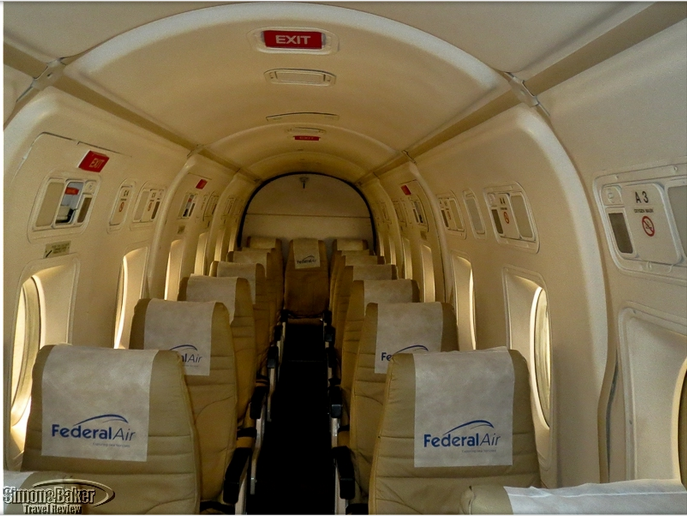
by Editor | Sep 14, 2021 | Ecotourism, Luxury Travel, Safari/Game viewing
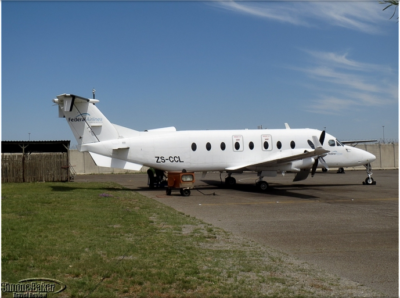
At the Federal Airlines terminal in Johannesburg, South Africa in 2016
Under normal circumstances our articles are based exclusively on the experiences and photography of our contributors at a destination and voyage. Due to the Covid-19 pandemic we have halted all travel. For those ready to travel now we are offering limited updates about destinations, properties and services featured in our pages in the past. To that end we are reaching out to those companies and requesting news and updates. Those who respond are featured in the series.
Our most recent profile of Federal Airlines was in 2016 on a safari trip to South Africa’s well known Sabi Sand Reserve. Our two contributors especially liked the safety and convenience of flights from the city to the bush as well as the relaxed comfort of the airline’s dedicated terminal away from Johannesburg’s congested international airport. The first flight, aboard a 1900D Raytheon aircraft, was from Johannesburg to the Mala Mala Reserve (see our most recent update on MalaMala at After year of closure luxury South Africa property reopening). It was comfortable with a minimal amount of bumpiness. It stopped at Ulusaba, Londolozi and Rattray’s on Mala Mala.
The second and the only nonstop flight was from the Mala Mala Reserve to a nearby reserve, two properties located within the Sabi Sand Reserve. A road transfer between the properties would have required a multi-hour drive. The final flight was from Sabi Sand back to Johannesburg, slightly earlier than originally expected due to heavy rains the previous day. Refer to the detailed profile of Federal Airlines for details.
For this update Julian Edmunds, chief commercial officer, Federal Airlines, responded to questions from his office via email. Below are our questions and his answers.
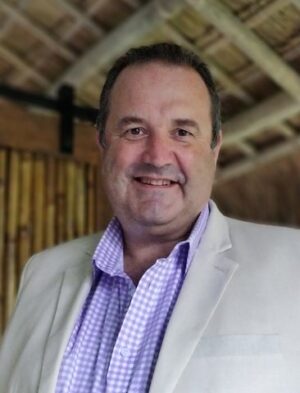
Julian Edmunds*, chief commercial officer, Federal Airlines
LTR: Is Federal Airlines flying scheduled and charter flights from a dedicated terminal at JNB to safari properties such as MalaMala, Singita, Sabi Sabi, etc and back?
JE: We fly a hybrid type of flight, which we call a Shuttle flight. Technically they are no scheduled flights, but they differ from Schedules in the fact that they don’t always operate to each runway (ie only on demand) and they differ from charters in the fact that you can buy seats rather than having to rent the whole aircraft.
Most of our flights operate in and out of our Private Terminal at OR Tambo, we offer an complimentary minibus shuttle service between our terminal and the main International and Domestic Terminals
LTR: What title applies for you in relation to Federal Airlines?
JE: I am the Chief Commercial Officer for Federal Airlines and also the same title for fastjet Zimbabwe. Effectively I am the group Chief Commercial Officer, but as many, such as yourself do not naturally relate Federal to fastjet it is easier to have the two separate titles. I have email addresses for both.
LTR: Can travelers book flights through your website?
JE: We place ourselves as a B2B business and thus it is best for Guests to book, either through their chosen lodge or alternatively through a Tour Operator. This allows for seamless coordination.
LTR: What, if any, Covid-19 protocols have you put in place?
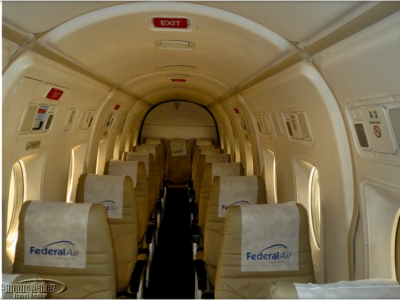
Inside a Federal Airlines aircraft, photo from 2016.
JE: We strictly follow all of the state protocols as required by law. From a working basis ONLY essential staff go to the office. We have the mantra that if your job can be done from home, do it from home. I am personally based in Malta and have not bee in either a Federal or fastjet office since 28 February 2020!
From a passenger perspective, we do not require any special testing, unless the passenger is flying with us internationally, in tese [these] cases the rules relating to the country they are visiting are followed.
We practice as much social distancing within our private terminal at OR Tambo, as we can. On board the aircraft, we ensure that all passengers are wearing masks for the duration of the flight, except when drinking water. We do NOT offer any cabin service or food.
From a booking perspective all of our bookings are fully flexible. A guest can change their booking as many times as they like with no charges as long as it is done at least 72 hours before the flight. We have also softened our cancellation terms to make them more sympathetic to people’s needs and we offer free changes within the 72 hour period to any passenger, who becomes COVID Positive, prior to their departure.
LTR: What recommendations would you share with travelers to stay ahead of the uncertainties presented by travel during a worldwide pandemic?
JE: Plan ahead. Take each day as it comes look to book with service providers that offer flexibility.
*Photo courtesy of Julian Edmunds
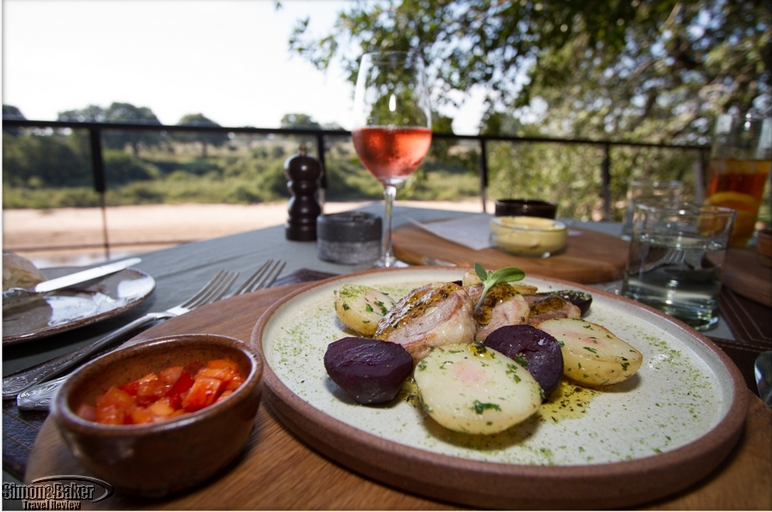
by Editor | Aug 10, 2021 | Accomodations, Ecotourism, Safari/Game viewing
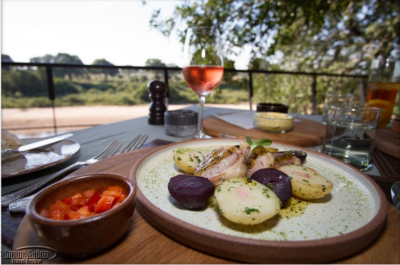
We loved the riverbed side setting at Singita Ebony Lodge, photo from 2017.
As we mentioned at the beginning of this update series under normal circumstances our articles are based exclusively on the experiences and photography of our contributors at a destination and property. Due to the Covid-19 pandemic we have halted all travel. For those ready to travel before we are we are offering limited updates about properties we have featured in the past. To that end we are reaching out to properties our contributors have visited (often more than once) and requesting news and updates.
Over the years we have profiled Singita properties in South Africa and Tanzania. In 2004 we featured Singita Lebombo within South Africa’s well known Kruger National Park. In 2006 we featured Singita Boulders Lodge in the popular Sabi Sand Game Reserve adjacent to Kruger National Park. In 2008 we published an updated feature of Singita Lebombo. It was followed by a profile of Ebony Lodge, also in the Sabi Sand Game Reserve in 2011, and in 2017 we published new impressions following a stay at Singita Ebony Lodge.
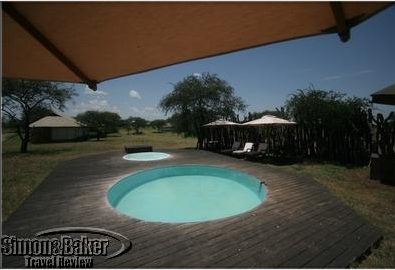
Sabora Plains Tented Camp pool in 2007
In 2007 we featured Sabora Plains Tented Camp and Sasakwa Lodge in the Grumeti Reserve in northern Tanzania. Faru Faru was under construction. Soon after our team’s departure the Grumeti properties entered the Singita marketing umbrella. According to Lisa Carey, manager, PR & Communications, Singita in Cape Town, South Africa, who responded to questions via email, during the Covid-19 period Singita Sabora Tented Camp “has been completely rebuilt.” In addition the company introduced seven stand alone luxury safari rental properties across Southern and East Africa as the Singita Private Villa Collection (new website: singitavillas.com/).
Kataza House has its own wine cellar, cinema room and massage area. A stay there requires deep pockets. For example, as of this writing a 12-night two country package including Kataza House and Serengeti House Private Long Stay Package in Rwanda and Tanzania for up to eight guests starts at $209,239 or $26,155 per person. It includes accommodations, meals, drinks, game drives, onsite activities, private guide, private host, chef and house staff. The properties in the Collection are: Singita Kataza House, Volcanoes National Park, Rwanda; in South Africa Singita Lebombo Villa, Kruger National Park (257,300 South African rand per night for up to eight guests), Singita Castleton (between 266,400 South African rand and 315,000 rand per night for up to eight guests) and Singita Ebony Villa, both in Sabi Sand; in Zimbabwe Singita Malilangwe House, Malilangwe; in the Serengeti in Tanzania Singita Explore, Serengeti and Singita Serengeti House, Serengeti.
Singita outlines its pandemic policies in a section on its website (see undated Covid Fact Sheet https://singita.com/singita-covid-19-protocols). According to Carey there is high speed internet access in the rooms and common areas “at all lodges, except Singita Explore – one of our villas, tented on the Serengeti plains.”
When asked about the decline in hotel services and amenities many travelers and travel articles report she replied: “To be honest, we have not had this problem at all. During lockdown, we went through an internal process of assessing every facet of the guest experience and refining, simplifying and making it better. Therefore at the moment, we have adapted many areas to be more in line with what the modern traveller values most – sanctuary, wellness, health, safety, connections in nature.”
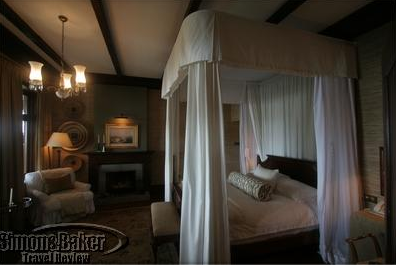
Roosevelt’s Cottage bedroom in 2007 at Sasakwa Lodge (now Singita Sasakwa Lodge)
Singita Private Collection properties vary in size and amenities. Some have more than one pool. Prices fluctuate with the demand and season, according to her. Singita welcomes extended stays. When asked about weekly and monthly rates Carey said, “we will look at monthly requests on a case-by-case basis.”
Last month two provinces in South Africa suffered widespread rioting, looting at hundreds of locations. There were more than 300 dead (according to a recent article in The Washington Post) as a result of political unrest following the jailing for the nation’s former president. Further media coverage and reports from Singita representatives and other contacts in South Africa indicate the situation has stabilized.
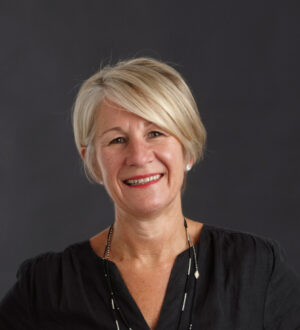
Lindy Rousseau, chief marketing officer, Singita
“The protests were localised in the Kwazulu-Natal and Gauteng provinces and were not near Singita’s access points or lodges,” said Lindy Rousseau, chief marketing officer, Singita, via email (forwarded to us by Carey). “Singita’s five lodges in the Mpumalanga province (Sabi Sand and Kruger National Park) were not affected and operated normally during the unrest. Logistical access to the lodges was not impacted. The South African Defence Force and SA Police have restored order and security forces continue to be present in some areas.”

Singita Lebombo swimming pool (2008)
Our Ebony and Boulders lodges visits in 2011 are described in Singita Sabi Sand properties in South Africa offered gourmet features, raised climate change awareness. We best remember Singita stays for distinctive, comfortable and luxurious accommodations. Our Singita Ebony experience in 2017 comes to mind. Our adjoining twin suites with private heated plunge pools in each were memorable. We liked the luxury property’s two full size swimming pools as well as onsite workout and spa facilities. The staff stood out for their friendliness and customer centered service. Ebony’s riverside dining area was a safari favorite. We also appreciated that property’s emphasis on conservation including a dedicated anti-poaching team.
From South Africa this week the latest update from Singita is that all is well. Carey indicated that there are “no problems getting to/from our lodges. It’s quite cold at the moment, so guests should dress warm!”
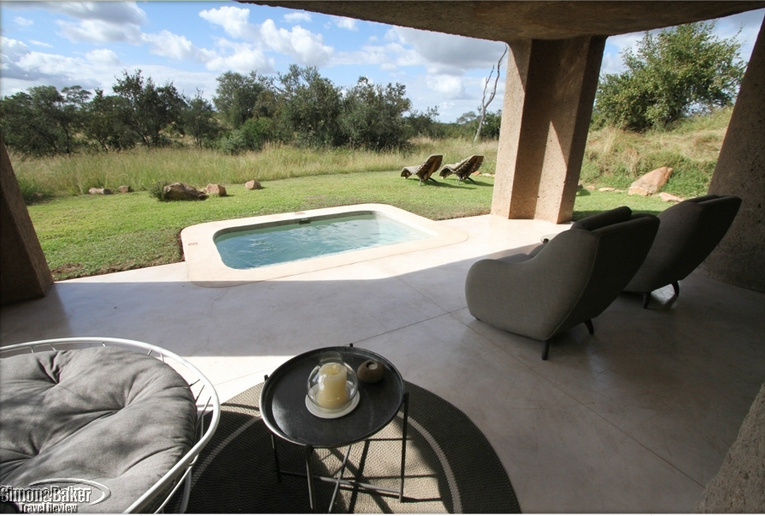
by Editor | Jul 6, 2021 | Accomodations, Ecotourism, Safari/Game viewing
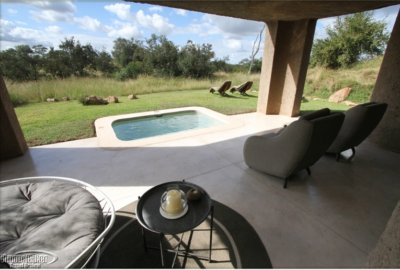
In 2017 our Sabi Sabi Earth Lodge guestrooms had private plunge pools.
Ordinarily our articles are based exclusively on the experiences and photography of our contributors at a destination and property. The near complete Covid-19 pandemic travel pause made it necessary to offer alternatives for those adventurous souls ready to seek new horizons or return to ones visited previously before we do. To that end we are reaching out to properties our contributors have visited (often more than once) and asking about their status and updates.
Our first Sabi Sabi profiles, of Earth Lodge and Selati Camp in South Africa, date to 2007. In 2017 our contributors returned to the Sabi Sabi Private Game Reserve within the Sabi Sand Reserve, part of the Greater Kruger National Reserve, an area world famous for its quality game viewing. While there they spent one night at Bush Lodge and revisited Earth Lodge. Earth Lodge, Bush Lodge and Selati Camp are three of four Sabi Sabi properties. Little Bush Lodge is the fourth.
By July 1, 2021 three of the Sabi Sabi safari properties are due to be open and by August 1, 2021 all four are scheduled to be open, according to a Sabi Sabi spokesperson who replied by email to our questions. The properties can be reached via nearby airports (as far as we know there is commercial service to Mpumalanga, Skukuza and Hoedspruit) and road transfers, by road transfer from Johannesburg and via Federal Airlines from Johannesburg to the reserve, in the past our favorite option.
“There is wifi at all lodges, however it is important to note that due to the environment we are in, interruptions may happen due to wildlife or weather interference,” she said when asked about high speed internet access at the reserve. When asked about exclusive use accommodations, private vehicles and extended stays she replied that they are subject to availability and on request.
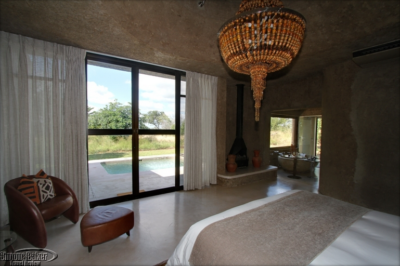
The Amber Presidential Suite had the amenities of regular guestrooms as well as extra space, seclusion, privacy and a bush and pool facing master bedroom.
According to an undated property brochure she provided Sabi Sabi has adjusted to the pandemic as follows: “Our daily routines and activities have been adjusted to ensure the highest safety standards are met. However, you will still experience the Sabi Sabi quality guiding and safari experience that we have crafted since 1979.” The brochure indicates the availability of round the clock medical response, quarantine facilities in the form of fully equipped suites, a doctor on call from a remote location, sanitizers and hygiene packs onsite; “dining areas have been increased to allow for safe social-distancing,” and a maximum occupancy of six guests per game viewing vehicle (eight for groups traveling together and requesting such conditions).
See details of our experiences and original photos at the three Sabi Sabi properties in 2007 at Selati Camp (we understand the property has undergone a renovation) and in 2017 Sabi Sabi Bush Lodge and Earth Lodge (At Sabi Sabi Bush Lodge excellent game viewing). Earth Lodge was our favorite for its boutique features, outstanding meals, excellent game viewing and warm and attentive service. The Amber Presidential Suite had the amenities of regular guestrooms as well as extra space, seclusion and privacy. It also had a bush and pool facing master bedroom, extra large en suite bathroom and oversize walk-in closet. There was also a second full bathroom, library, living room, dining room and kitchenette. The attentive property managers, air conditioned workout room with glass wall facing a water feature (see photo in Earth Lodge profile) is one of the amenities we recall along with the many wildlife sightings from the main area of the lodge in between the twice daily game drives.
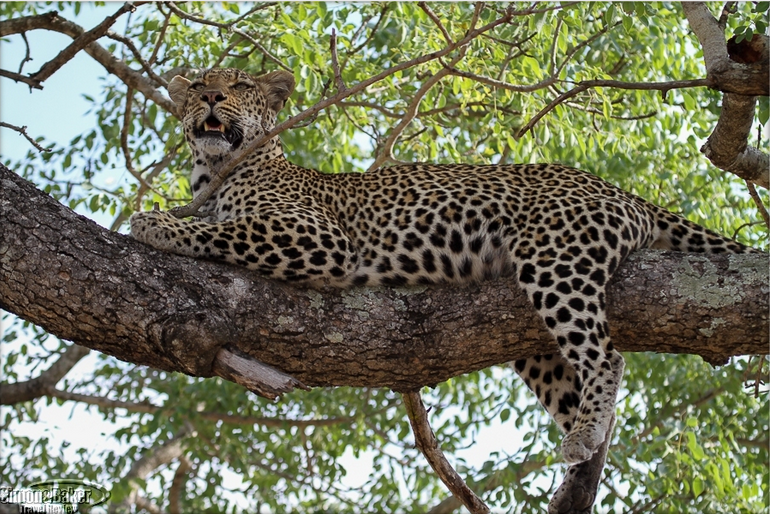
by Editor | Jun 7, 2021 | Accomodations, Ecotourism, Safari/Game viewing
Ordinarily our articles are based exclusively on the experiences and photography of our contributors at a destination and property. The near complete Covid-19 pandemic travel pause made it necessary to offer alternatives for those adventurous souls ready to seek new horizons or return to ones visited previously before we do. So… we are reaching out to properties our contributors have visited (often more than once) and asking about their status and updates.
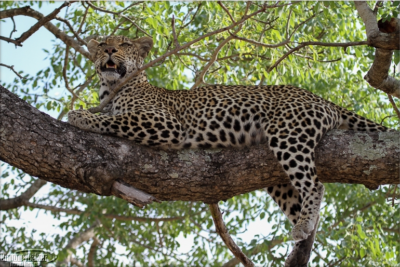
Leopard on a tree at Rattray’s in 2016
Because they have consistently impressed us with their reliability and high standards in past stays over the years, and thanks to their representative’s speedy responses and willingness to answer questions MalaMala is first. Of the reserve’s three properties we have profiled two: MalaMala Rattray’s Camp (previously known as Rattray’s on MalaMala) several times and MalaMala Camp (previously known as MalaMala Main Camp) in South Africa’s well known Sabi Sand Reserve adjacent to the famous Kruger National Park. MalaMala Rattray’s Camp is reopening this month after a one year closure.
Once in Johannesburg, South Africa the MalaMala camps can be reached via direct flight from that city’s international airport on Federal Air (we are awaiting a reply from the airline with details) into the reserve’s airstrip a few minutes drive from the camps. Another option is on Airlink into Skukuza Airport. From there a road transfer is necessary.
“All our camps will be open from 01 June 2021 including MalaMala Rattray’s Camp,” said Alison Morphet, managing director, MalaMala by email about the reserve’s camps. “We are offering a pay 3 / stay 4 for travellers and yes there is high speed internet access in all the rooms. It is not available in the public area’s out of consideration to other guests enjoying their safari experience. A limited number of private vehicles are available and of course all our suites and rooms are stand alone. Guests may opt to have room service for their meals but with the relevant social distancing between tables, the outdoor nature of a safari experience and all our staff wearing masks, most guests choose to have their meals on the deck (and boma dinners when available).
The game viewing is better than ever and I am delighted to report that Covid has had some silver linings. We have had time to re think our product offerings and refine these over the long lock down. We have also relied on feedback from the South African market who travel extensively to Southern African bush destinations and their feedback has been invaluable.”
Minibars and in-room dining amenities are a godsend on days when travel or the excitement of the game drives leaves us spent, seeking comfort food and indoor relaxation. One of the MalaMala updates we like is the buffets were replaced with plated meals and a la carte dining. Having said that during past stays our contributors found Rattray’s willing to provide room service with no fuss.
At Rattray’s we fondly recall the intimate setting, spacious rooms with double bathrooms and private plunge pool, workout facilities, full size swimming pool, and service oriented staff. From the game viewing perspective MalaMala rangers drew attention to the creatures large and small in the bush while focusing on the Big Five, and one of our favorite features anywhere, Rattray’s four guest maximum per safari vehicle. That is as good as it gets shy of a private game viewing vehicle.
For details of our experiences and original photos at the two MalaMala camps see our profile of MalaMala Camp from 2006 and our most recent profile of MalaMala Rattray’s Camp from 2016 at Rattray’s on Malamala.
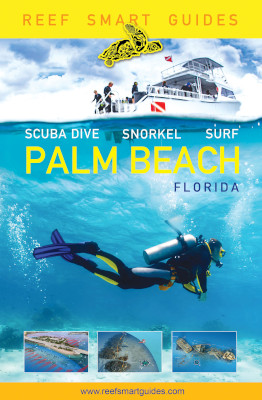
by Editor | Mar 2, 2020 | Books, Ecotourism

Palm Beach Florida Scuba Dive, Snorkel, Surf (Mango Publishing Group, $34.99) features detailed descriptions, photos and crisp 3D images of waterscapes, including underwater maps and even a ghost ship recreation for a wreck dive description. The 287-page softcover color book by Peter McDougall, Ian Popple and Otto Wagner, part of the Reef Smart Guides series, was published in 2019. The authors are part of the Reef Smart Guides management team.
Why Palm Beach county? “We’re looking for hidden gems and Palm Beach was one of those areas,” Popple, credited in the book for series concept and writing, said by phone from Canada. “Most of the diving you do in Palm Beach County is drift diving.”
The marine biologist explained that the conditions in Palm Beach County required the team to change their techniques. The three men rely on global positioning systems and photogrammetry (using photos to make maps and surveys) to create 3D images. Those images are converted into 2D images in the book. They took a series of photos from which they created a 360 degree view of each underwater area highlighted.
Print books are popular because electronic devices can’t get wet and are easily stolen, he explained. Having a clear idea of snorkel and dive sites ahead of time is helpful because planning is an important element in diving, he added.
Following an introduction to Palm Beach County the book is divided into two main sections Surf breaks and Diving and snorkeling. It also has information on area sea turtles and dozens of fish profiles. The diving and snorkeling section is much longer than the surfing section. The book features detailed information of individual surf, dive and snorkel sites. Each dive site description includes computer generated images, access, reef and wreck details and a rating from one to three for difficulty, current and depth as well as one to three star ratings for reef and fauna.
The Palm beach guidebook contains 46 photos, 15 illustrations, 92 species profiles and 71 3D maps featuring 31 dive and snorkel sites, some of which are sites with multiple wrecks. The Blue Heron Bridge snorkel and dive site featured in the book is “One of the best shore dives in the world,” Popple said.
Reef Smart offers marine and shipwreck guides for divers, surfers and snorkelers. The first Reef Guide book was about Bonaire, “the shore diving capital of the world,” according to Popple. The company also offers services and training to resorts. The authors received support (flights and accommodations) from Discover the Palm Beaches, the county’s tourism promotion entity, and some dive operators.
At our request Popple shared his thoughts on the top three surf, snorkel and dive sites in Palm Beach. For surfing, “Reef Road is the spot that most people both inside and outside of Palm Beach will have heard of,” he said. “It’s by far the best spot in county. It’s a location better suited to more experienced surfers though, especially the adjacent site across the inlet called Pump House, which may only peak on a couple of day of the year, but when it does it’s the place to be.” He also mentioned Lake worth Pier for its consistency and Juno Pier (and the stretch up to Jupiter inlet) for decent breaks when the conditions are right.
For snorkeling: Blue Heron Bridge, Ocean Reef Park and The Lofthus wreck were his picks. About the Blue Heron Bridge he said, “You never know what you’re going to find at this site, anything from seahorses to eagle rays and it’s all located within a protected swimming area.”
“Just off the public beach is a several small patch reefs that support a surprising amount of marine life, including stingrays, small morays and schooling of grunts and snapper,” he said about Ocean Reef Park, adding that there is plenty of parking, a life guard tower, and showers.
About the Lofthus wreck he said, “It’s a hike up the beach, but it’s a fun site to explore and there’s an interesting history to the site (it’s one of Florida’s archaeological preserves) and there’s always the chance of running into something large (e.g. barracuda, nurse shark, sting ray). The downside is that shifting sand bars mean that sometimes large parts of the wreck can be obscured by sediment.”
His top diving picks are: Blue Heron Bridge, The Mitzpah corridor and MV Castor. About the Blue Heron Bridge he said, “This shore dive has to be one of the best in the world and you might be surprised to find it in Palm Beach. It’s a protected area with tons of cryptic species like frogfish, seahorses, and batfish. Because it’s so shallow you can spend a long time underwater exploring the site.”
The Mitzpah corridor is “the mother of all wreck treks,” he said. “Starting at the Ana Ceceilia you can drift for the whole dive from one wreck to the next, a total of five, ranging in size; the largest being the massive Amaryllis, which is 440 feet in length.”
MV Castor “is the wreck that most people want to visit when they dive Palm Beach,” he said. “The ship was a freighter sunk in 2001. The ship has broke into separate bow and stern sections with a debris field of hull plates between. The wreck is famous for it’s giant goliath grouper and during spawning season there can be over 50 present there. You literally never know what you might find when you enter the water here.”
When asked how much influence the tourism authority, hotels and dive operators his team worked with had on the editorial content of the book he replied, “They didn’t. The tourism authority helped facilitate our mapping trip, by organizing flights and places to stay locally, but had no say on the content of the book and neither did the hotels where we stayed. The dive centers advised us on which sites we should map, but again, had no editorial input.”
Palm beach is the team’s fourth guidebook. Next are Grand Cayman in the spring, and the Florida panhandle in the fall; followed by guide books on the sister islands Little Cayman and Cayman Brac, Florida keys, Grenada, and Curaçao.
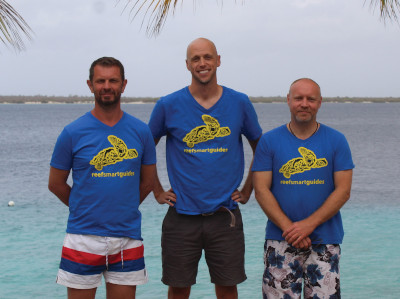
The Reef Smart team
Born and raised in Canada, McDougall received his undergraduate and master’s degrees from McGill University. His focus on behavioral ecology and coral reef ecology led him to two field seasons at Bellairs Research Institute in Barbados, in 1999 and 2002. After graduating in 2003, he moved to the United States and began a career in science communication and writing, publishing in peer-reviewed academic journals and the popular press. He has written on a variety of coastal ecosystem issues, including extensive work surrounding the science of ocean acidification. He is a PADI Rescue Diver with over 300 dives in 19 years of experience.
Popple was born and raised in the United Kingdom, where he earned his undergraduate degree in oceanography from the University of Plymouth in 1994. He worked for five years at Bellairs Research Institute in Barbados, supporting research projects across the region, before completing his master’s in marine biology at McGill University in 2004. He co-founded a marine biology education company, Beautiful Oceans, before founding Reef Smart in 2015 to raise awareness and encourage people to explore the underwater world. He has published in the scientific and mainstream media, including National Geographic, Scuba Diver Magazine and The Globe and Mail. He is a PADI Dive Master with over 3,000 dives in 25 years of diving experience.
Wagner was born and raised in Romania. He graduated from the University of Art and Design in Cluj, Romania in 1991. In 1999, he moved to Canada, where he studied Film Animation at Concordia University in Montreal. In 2006, he turned to underwater cartography and pioneered new techniques in 3D visual mapping. He co-founded Art to Media and began mapping underwater habitats around the world. He received the Prize of Excellence in Design from the Salon International du Design de Montréal. He has also illustrated seven books. Wagner is a PADI Advanced Diver with over 500 dives in 15 years of diving experience.
Photos courtesy Reef Smart

Click to buy Reef Smart Guides Florida: Palm Beach: Scuba Dive. Snorkel. Surf.

by Editor | Dec 2, 2019 | Books, Ecotourism

Complete Guide to Florida Wildflowers*
Visitors to Florida have a new tool to identify wildflowers. In the Complete Guide to Florida Wildflowers Over 600 Wildflowers of the Sunshine State including National Parks, Forests, Preserves, and More than 160 State Parks (Falcon Guides, $29.95) Roger L. Hammer, a career naturalist based in Homestead, shared color photos of 686 Florida native wildflowers.
“I chose to omit naturalized exotic species and native woody shrubs and trees, concentrating mostly on herbaceous wildflowers,” Hammer said by email about the photos in the 378-page softcover book published in 2018. “The book took 12 months to complete, but I had a head start by already having published guides that covered central and southern Florida, so I only needed to concentrate on northern Florida and the Panhandle.”
Hammer took all of the photos using a Nikon D810 digital camera with a Nikkor 105 millimeter macro lens. The book is divided into an introduction and six sections. The sections feature flowers by color: blue and purple, pink, red and orange, yellow, brown and green, and white. Each page is dedicated to two flowers. A color photo of the flower occupies the top half followed by the name, description, season when it blooms, where it can be found, and comments.
“The greatest challenge was driving up to the Florida Panhandle about a dozen times from Homestead and back, which takes between 10 and 14 hours one-way, then spending a week up there, driving back home, and then heading back the following month,” Hammer said. “Locating some of the rare wildflowers up there was also challenging, but I relied on botanist friends who live in the Panhandle, and also rangers in some of the state parks.
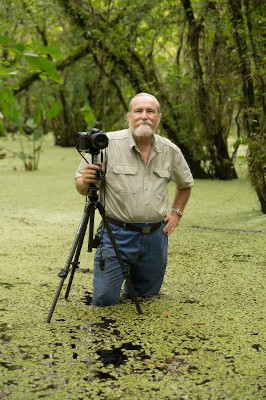
Roger L. Hammer, author, Complete Guide to Florida Wildflowers
My first love affair with Florida wildflowers was with native orchids, so it was a thrill to photograph species of orchids that I had not seen before. Of the 110 native orchids in Florida, I have now photographed 96 of them. Also, I was able to include all 21 native milkweeds (Asclepias), all 10 native mints in the genus Dicerandra, all 5 milkvines (Matelea), and all 4 species of wakerobins (Trillium). There are many other wildflowers included in this guide that have never appeared in field guides before.”
How can beginners who want to identify a wildflower begin? “Readers should become familiar with botanical names, which they can then use to search the University of South Florida’s Florida Plant Atlas,” he said. “There they will find a range map, common names, botanical synonyms, and a photo gallery. It is one of the more useful websites for Florida’s native and naturalized flora, .florida.plantatlas.usf.edu”
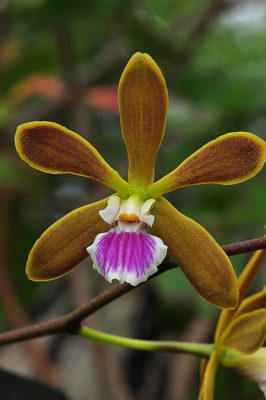
The Butterfly orchid
For orchid lovers the following common species can be seen without too much effort, according to the author. The Tuberous grass-pink orchid (Calopogon tuberosus) can be found in spring in wet, grassy prairies and pine flatwoods throughout mainland Florida. The Butterfly orchid (Encyclia tampensis) flowers in summer and is frequent on trees in upland forests and coastal buttonwood-mangrove forests from north-central Florida south into the Florida Keys. The Spring ladies’-tresses (Spiranthes vernalis) is common along roadsides and in grassy prairies throughout mainland Florida and flowers in spring.
Hammer is a survivalist instructor for the Discovery Channel’s reality TV show Naked and Afraid. He was the manager of the 120-acre Castellow Hammock Nature Center for the Miami-Dade County Parks Department for 30 years. In addition to the new book he is the author of Everglades Wildflowers, Florida Keys Wildflowers, Central Florida Wildflowers, Attracting Hummingbirds and Butterflies in Tropical Florida, Exploring Everglades National Park, and Paddling Everglades and Biscayne National Parks. He lives in Homestead with his wife, Michelle.
*Photos courtesy of Falcon Guides, Paul Marcellini, Roger Hammer




























